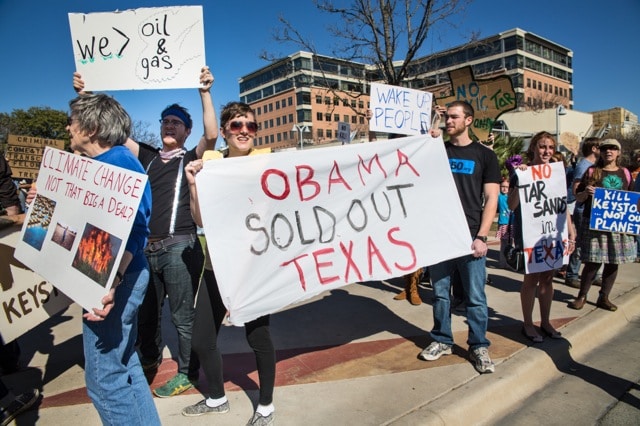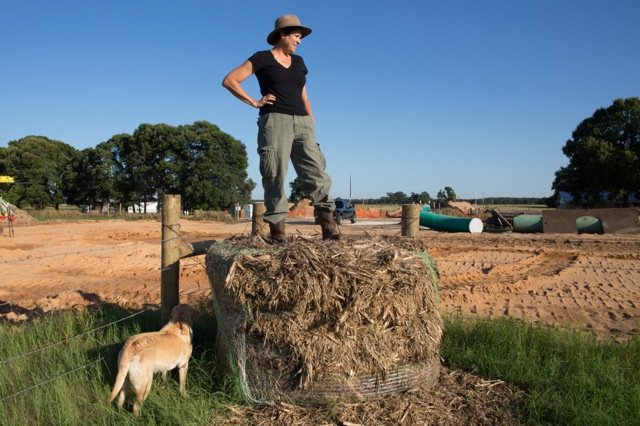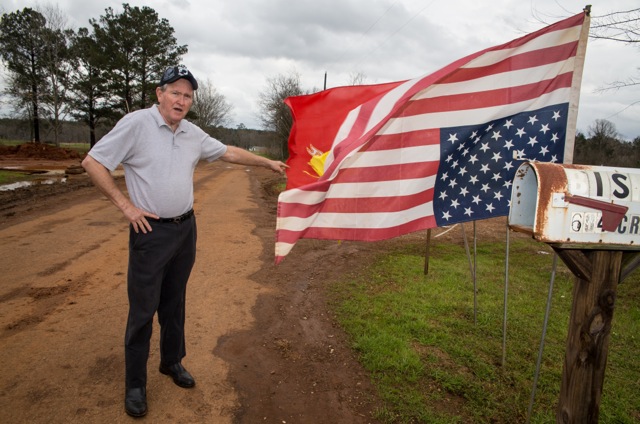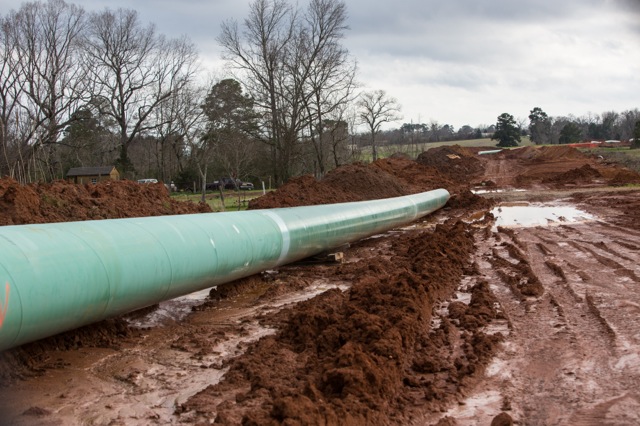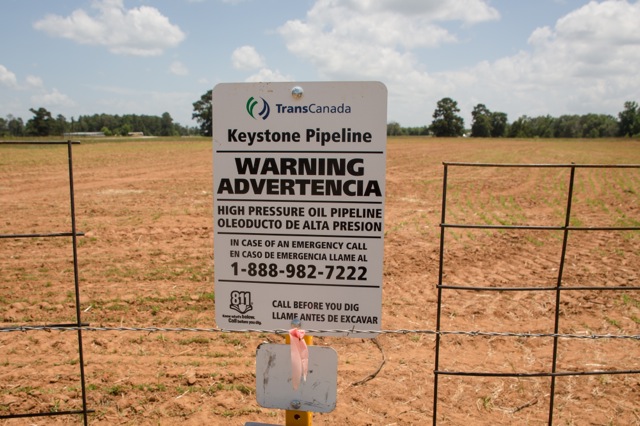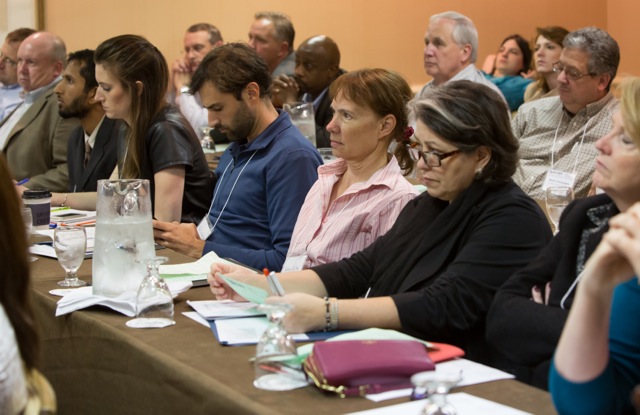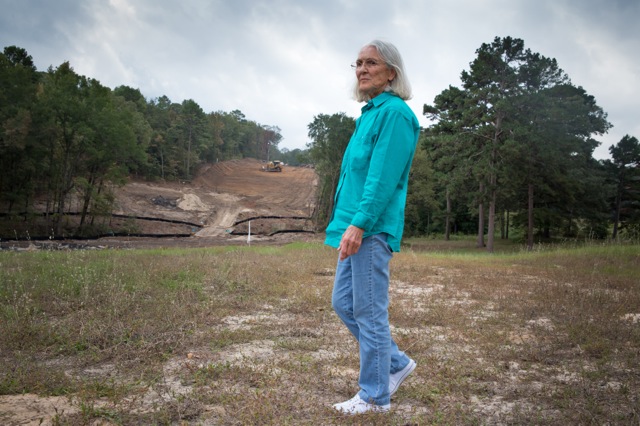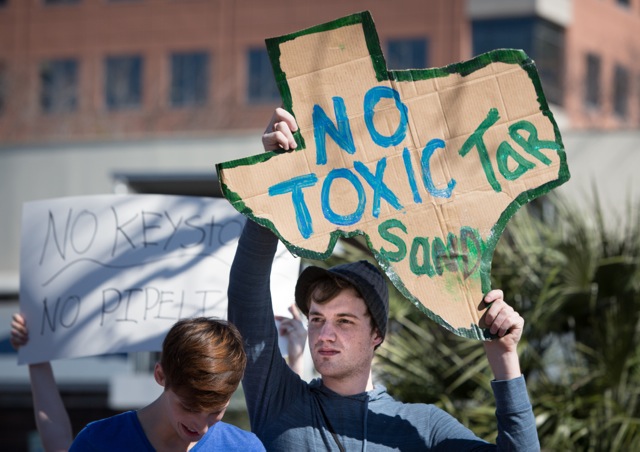As expected, President Obama today vetoed the Republican bill attempting to allow TransCanada to finish constructing the Keystone XL tar sands export pipeline. While the veto received praise from environmentalists, along with encouragement to reject the pipeline entirely, the veto provides little consolation to those in Texas who already have the southern route of the pipeline moving Canadian tar sands under their land.
“Don’t get me wrong. I’m thrilled that President Obama owned up to his promise to veto the Keystone XL pipeline bill today. But in the same breath I’m spittin’ mad,” Julia Trigg Crawford, Texas landowner who fought TransCanada from taking her land by eminent domain but lost, told DeSmogBlog.
“Nearly three years ago, with the exact same data in front of him he decided to ‘cut through the red tape and fast track’ the southern leg of this project. Where was his ‘climate test’ then?” “Before the ink is dry on this veto, President Obama owes all of us in Texas and Oklahoma an explanation. Better yet, an apology.”
Julia Trigg Crawford next to the easement on her land in Sumner, Texas that TransCanada condemned to build the southern route of the Keystone XL pipeline. ©2013 Julie Dermansky
In the constant clamor from high profile environmental groups for President Obama to reject the Keystone XL pipeline, there is little mention that the president fast-tracked the southern portion of the pipeline. Nor do most people know that TransCanada is already transporting tar sands from Canada to the Gulf Coast.
Protesters against the Keystone XL in Austin, Texas on February 17, 2013 in solidarity with protesters in Washington D.C. where tens of thousands rallied in against Climate Change. ©2013 Julie Dermansky
The southern route of the Keystone XL, renamed the Gulf Coast Pipeline Project, connects to TransCanada’s Keystone pipeline that runs from Alberta, Canada, to Cushing, Oklahoma. The southern route of the Keystone XL was put into operation in January 2014. If the northern route were permitted, the company would be able to send more tar sands product over a shorter distance, but a ban on constructing the northern route does not stop pipelines across America from transporting tar sands to refineries and export terminals.
While the battle to stop the Keystone XL‘s northern route was being waged, Enbridge, another Canadian corporation, created its own pipeline. Named “The Keystone Clone” by DeSmogBlog, it runs from Canada to the Gulf of Mexico. Like TransCanada, Enbridge connected lines to make a pipeline pathway from Canada to the Gulf with the intent of reaching the global market for tar sands producers.
Enbridge’s Alberta Clipper (Line 67), Flanagan South and Seaway Twin pipelines make up “The Keystone Clone.” As Steve Horn reported for DeSmogBlog, Enbridge’s “system does what Keystone XL and the Keystone Pipeline system at large is designed to do: ship hundreds of thousands of barrels per day of Alberta’s tar sands diluted bitumen [‘dilbit’] to both Gulf Coast refineries in Port Arthur, Texas, and the global export market.”
Michael Bishop, a Marine veteran, medical student, farmer, and partner in a bio-diesel engineering venture, resides in Douglass, Texas, where he is continuing to fight against TransCanada and the government for putting the Keystone pipeline on his property. He thinks the president’s veto of the bill was theater.
“Congress has no legal authority to permit this pipeline in the first place, ” Bishop told DeSmogBlog.
Michael Bishop flies his flag upside down to show his property is under distress while TransCanada installed the Keystone XL pipeline on his land in Douglas, Texas. ©2013 Julie Dermansky
Keystone XL pipeline being installed on Mike Bishop’s property ©2013 Julie Dermansky
Some of the President’s concerns about the northern route of the pipeline are in line with the objections Bishop has that continue to fuel his battle against the southern route, which he’d like to see dug up. “Either Obama fast-tracked the southern route for political gain, or he is bi-polar,” Bishop said.
“President Obama has violated my civil rights. He has put one class of people over another. How can he protect Nebraska and ignore Texas?” Bishop asks.
Acting as his own lawyer, Bishop has challenged the US Army Corps of Engineers, alleging it didn’t give Texas equal protection under the Clean Air and Water Acts as it did Nebraska, where the Keystone XL route was rerouted away from sensitive aquifers.
In his pending lawsuit, Bishop alleges: “The Corps yielded to political pressure and expedited the permit in violation of federal environmental regulations. The state didn’t do the kind of environmental impact study that was done in Nebraska, which resulted in the pipeline being re-routed away from the aquifer. The path of the southern pipeline portion goes through the Texas Ogallala Aquifer, which is also classified as an ‘ultra-sensitive area’ by the U.S. Department of Transportation. Texas was not given equal protection under the law.”
Warning sign for the Keystone XL Pipeline in Douglas, Texas. ©2013 Julie Dermansky
The recent ruling by Nebraska judge Mark Kozisek, denying TransCanada the right to condemn land using eminent domain, and a ruling in the Court of Appeals in Beaumont, Texas in favor of David Holland that reversed a lower court’s ruling that gave Denbury Green Pipeline-Texas LLC the right to use eminent domain, strengthen Bishops case.
“These rulings indicate landowner rights are now being seriously considered by the courts,” Bishop said.
Kathy DaSilva, a spokesperson for Tar Sands Blockade, an environmental activist group, thinks those who are serious about protecting the environment from climate change must look beyond President Obama’s gesture. “We are only talking about one segment of one tarsand-bearing pipeline being blocked,” DaSilva told DeSmogBlog.
Kathy DaSilva (second from right) at a pipeline safety conference in New Orleans. ©2013 Julie Dermansky
“The EPA makes clear that the completion of the northern segment of the KXL pipeline would be detrimental because the extraction, transport, refining and use of tar sands oil would result in an extreme increase of greenhouse gases into the atmosphere, ” DaSilva said. “It is time to hold our government accountable for the EPA‘s findings. The extraction, transportation, refining and usage of tar sands needs to end now.”
Eleanor Fairchild, labeled an “eco-terrorist” by TransCanada after she and Daryl Hannah blocked land-clearing machinery on Fairchild’s property in Winnsboro, Texas, sees President Obama’s veto as a victory. “That they stopped even part of the pipeline is a win,” she told DeSmogBlog.
Eleanor Fairchild inspects the easement on her land in Winnsboro, Texas while TransCanada prepares to install the pipeline. ©2012 Julie Dermansky
Fairchild thinks President Obama should have put his foot down against the Keystone XL long ago.
“I don’t like that Obama came and blessed the southern route of the project,” Fairchild said. But, she acknowledges, “the pipeline would have been built here anyway since Texas and Oklahoma had already approved it.”
Fairchild takes comfort knowing TransCanada cannot transport as much tar sands through America as it wanted to, but doesn’t think that will put a dent in curbing climate change. “We need to look at the bigger picture and stop all tar sands developments,” Fairchild said.
Protesters in Austin, Texas February 17th, 2013 at the same time thousands rallied in Washington DC against Climate Change. ©2013 Julie Dermansky
Subscribe to our newsletter
Stay up to date with DeSmog news and alerts


